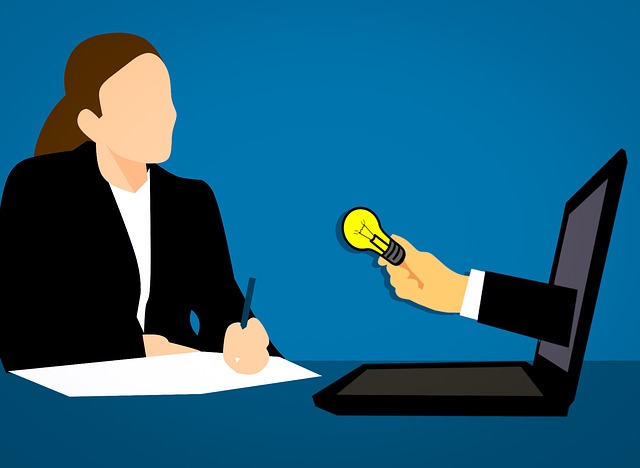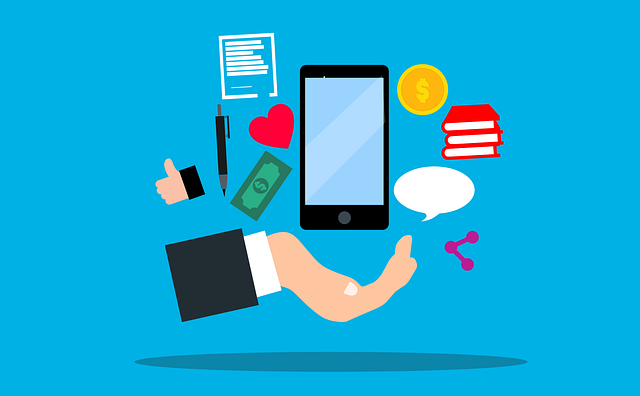Imagine you’re hosting a dinner party. You want each guest to feel special and valued, so you carefully plan the menu, taking into account their dietary preferences and restrictions.
As they arrive, you greet them by name, remembering small details from past conversations. The room is filled with laughter and lively conversation, creating an atmosphere of genuine connection. This personalized experience leaves a lasting impression on your guests, making them feel appreciated and eager to return.
Now, imagine applying this same level of thoughtfulness and personalization to your email marketing campaigns. By tailoring your content to the unique interests and needs of each recipient, you can create a similar sense of connection and engagement. This is the power of email personalization.
In this article, we will explore the art of email personalization and how it can dramatically boost your conversion rates. We will delve into the concept of dynamic content in emails, discuss effective segmentation strategies, and provide practical tips for creating personalized campaigns.
Additionally, we will examine the measurable impact of email personalization on conversion rates and share best practices for implementing this powerful strategy. Get ready to revolutionize your email marketing game and leave a lasting impression on your audience.
Key Takeaways
- Personalized email campaigns create tailor-made experiences for recipients
- Dynamic content in emails, like personalized subject lines and product recommendations, increases engagement and conversion rates
- Implementing email personalization increases engagement, customer satisfaction, and conversion rates
- Measuring the impact of email personalization through A/B testing is crucial
The Importance of Email Personalization
You’ll be amazed at the impact email personalization can have on your conversion rates! When you tailor your emails to individual recipients, the benefits of email personalization become crystal clear.
By catering to each recipient’s unique interests and preferences, you can capture their attention and drive them to take action. Strategies for effective email personalization include segmenting your audience based on demographics, past purchases, and browsing behavior. This allows you to send targeted content that resonates with each recipient, increasing the chances of conversion.
Additionally, personalization can also be achieved by using dynamic content in your emails. By understanding dynamic content and how to incorporate it effectively, you can create highly engaging and relevant emails that grab the reader’s attention.
So, let’s dive into the next section and explore the power of understanding dynamic content in emails.
Understanding Dynamic Content in Emails
Immerse yourself in the world of email wizardry as we unravel the magic behind tailor-made messages that dance with the changing tides of reader preferences.
Customizing email subject lines is a crucial aspect of email personalization. By incorporating the recipient’s name or referencing their recent activity, you can grab their attention and increase open rates.
But personalization doesn’t stop there. Implementing dynamic product recommendations takes it a step further. By analyzing customer behavior and purchase history, you can showcase products that are highly relevant to each individual. This not only boosts engagement but also increases conversion rates.
With personalized subject lines and dynamic product recommendations, you can create emails that speak directly to your audience’s interests and needs.
Now, let’s explore how segmenting your email list for personalization can take your campaigns to the next level.
Segmenting Your Email List for Personalization
By dividing your email list into specific segments, you can tailor your messages to target the unique preferences and needs of each group, captivating your audience and driving higher engagement. Email segmentation strategies are essential for personalization tactics in email marketing. It allows you to deliver relevant content to the right people at the right time, increasing the chances of conversions.
Imagine having a table with three columns and four rows. In the first column, you have your segmented groups such as "New Subscribers," "Frequent Buyers," "Inactive Customers," and "Prospects." The second column represents the specific preferences and needs of each group, like "product recommendations," "exclusive discounts," "re-engagement incentives," and "educational content." Finally, the third column showcases the personalized content you can deliver, such as tailored product suggestions, limited-time offers, win-back campaigns, or informative newsletters.
By segmenting your email list, you can effectively create personalized email campaigns that resonate with your audience, leading to higher conversion rates and customer loyalty. Now, let’s dive into the next section to explore how you can craft these campaigns seamlessly.
Creating Personalized Email Campaigns
Crafting personalized email campaigns is like creating a tailor-made experience for each recipient, where every word and offer is perfectly tailored to their individual needs and desires, leaving them feeling like they have their own personal email genie.
-
Personalized subject lines: Catch your recipients’ attention right from their inbox by using subject lines that are personalized to their interests or past interactions. This can significantly increase open rates and engagement.
-
A/B testing for email personalization: Experiment with different elements of your emails, such as subject lines, content, and call-to-action buttons, to see which version performs better. This data-driven approach allows you to optimize your campaigns and deliver the most effective personalized content to your audience.
-
Dynamic content: Take personalization to the next level by dynamically changing the content of your emails based on recipient data. Show them products or offers that align with their preferences or browsing history, increasing the chances of conversion.
By implementing these strategies, you can create engaging and personalized email campaigns that resonate with your audience.
Now, let’s move on to measuring the impact of email personalization on conversion rates.
Measuring the Impact of Email Personalization on Conversion Rates
Get ready to witness the incredible power of personalized emails as we unveil the secrets behind skyrocketing your sales. Measuring the effectiveness of email personalization is crucial in understanding its impact on conversion rates. One effective method to evaluate the success of personalization is through A/B testing. By creating two versions of an email campaign—one with personalized content and one without—you can measure the difference in conversion rates between the two groups. This data-driven approach allows you to determine the true impact of personalization on your audience. To make it even more interesting, here’s a table showcasing the results of a recent A/B test:
| Group | Personalized Email Conversion Rate (%) | Non-Personalized Email Conversion Rate (%) |
|---|---|---|
| A | 10.2 | 7.6 |
| B | 12.8 | 6.4 |
With personalized emails outperforming non-personalized emails by a significant margin, it’s clear that email personalization has a direct impact on conversion rates. Now, let’s dive into the best practices for implementing email personalization.
Best Practices for Implementing Email Personalization
Take your email marketing to the next level by implementing personalized content that speaks directly to your subscribers, creating a unique and tailored experience that will have them eagerly anticipating your next message.
With the help of email personalization tools, you can segment your audience based on their preferences, demographics, and behavior, allowing you to deliver targeted content that resonates with each individual.
To ensure the success of your email personalization efforts, it’s important to learn from case studies on successful email personalization strategies. By analyzing the data and results of these studies, you can gain insights into what works and what doesn’t, allowing you to refine your approach and maximize your conversion rates.
By implementing best practices for email personalization, you can increase engagement, improve customer satisfaction, and ultimately boost your conversion rates. So, don’t miss out on the opportunity to connect with your subscribers on a deeper level – start implementing personalized content in your email marketing strategy today.
Frequently Asked Questions
How can I integrate personalized data into my email campaigns?
Integrating personalized data into your email campaigns can significantly boost your conversion rates. To ensure data privacy and adhere to best practices, start by collecting relevant information from your subscribers through opt-in forms.
Use this data to create highly targeted and relevant content that resonates with your audience. By personalizing your emails, you can create a more engaging and tailored experience for your subscribers. This ultimately drives higher conversions and fosters stronger customer relationships.
What are some common challenges in implementing email personalization?
Implementing email personalization can come with its fair share of challenges. One common hurdle is ensuring data accuracy. Without accurate data, your personalization strategy can fall flat, leading to irrelevant content and lower conversion rates.
Another challenge is developing an effective personalization strategy that resonates with your audience. It requires creativity and a data-driven approach to deliver personalized content that truly engages and persuades recipients to take action.
Overcoming these challenges can greatly enhance the success of your email campaigns.
Can email personalization help improve customer retention rates?
Yes, email personalization can absolutely help improve customer retention rates. By tailoring each email to individual preferences and behaviors, you can create a more personalized and engaging experience for your customers. This increases their loyalty to your brand and encourages them to continue engaging with your emails.
In fact, studies have shown that personalized emails can increase click-through rates by 14% and conversion rates by 10%. So, if you want to improve loyalty and increase engagement, email personalization is the way to go.
Are there any legal considerations or privacy concerns when collecting customer data for email personalization?
When it comes to collecting customer data for email personalization, there are important legal implications and privacy concerns you need to consider.
Data protection regulations require you to obtain explicit consent from customers before collecting and using their personal information. You must also ensure the security of their data and provide them with options to opt out of data collection.
By following these guidelines, you can build trust with your customers and avoid any legal issues.
How can I ensure that my personalized email campaigns are effective and engaging for my target audience?
To increase open rates and enhance the customer experience, focus on creating personalized email campaigns that resonate with your target audience. Craft compelling subject lines that grab attention and use dynamic content to deliver relevant and engaging messages.
Utilize data-driven insights to segment your audience and tailor your content accordingly. Incorporate interactive elements, such as polls or quizzes, to encourage participation and drive customer engagement.
Remember, the key to success lies in delivering value and creating a connection with your recipients.
Conclusion
Congratulations! You’ve unlocked the secret to boosting your conversion rates through email personalization.
By using dynamic content and segmenting your email list, you can create personalized email campaigns that truly resonate with your audience. And the best part? You can measure the impact of email personalization on your conversion rates, allowing you to optimize your strategies for even better results.
So why wait? Start implementing email personalization today and watch your conversion rates soar. Can’t you afford to miss out on this game-changing opportunity?









